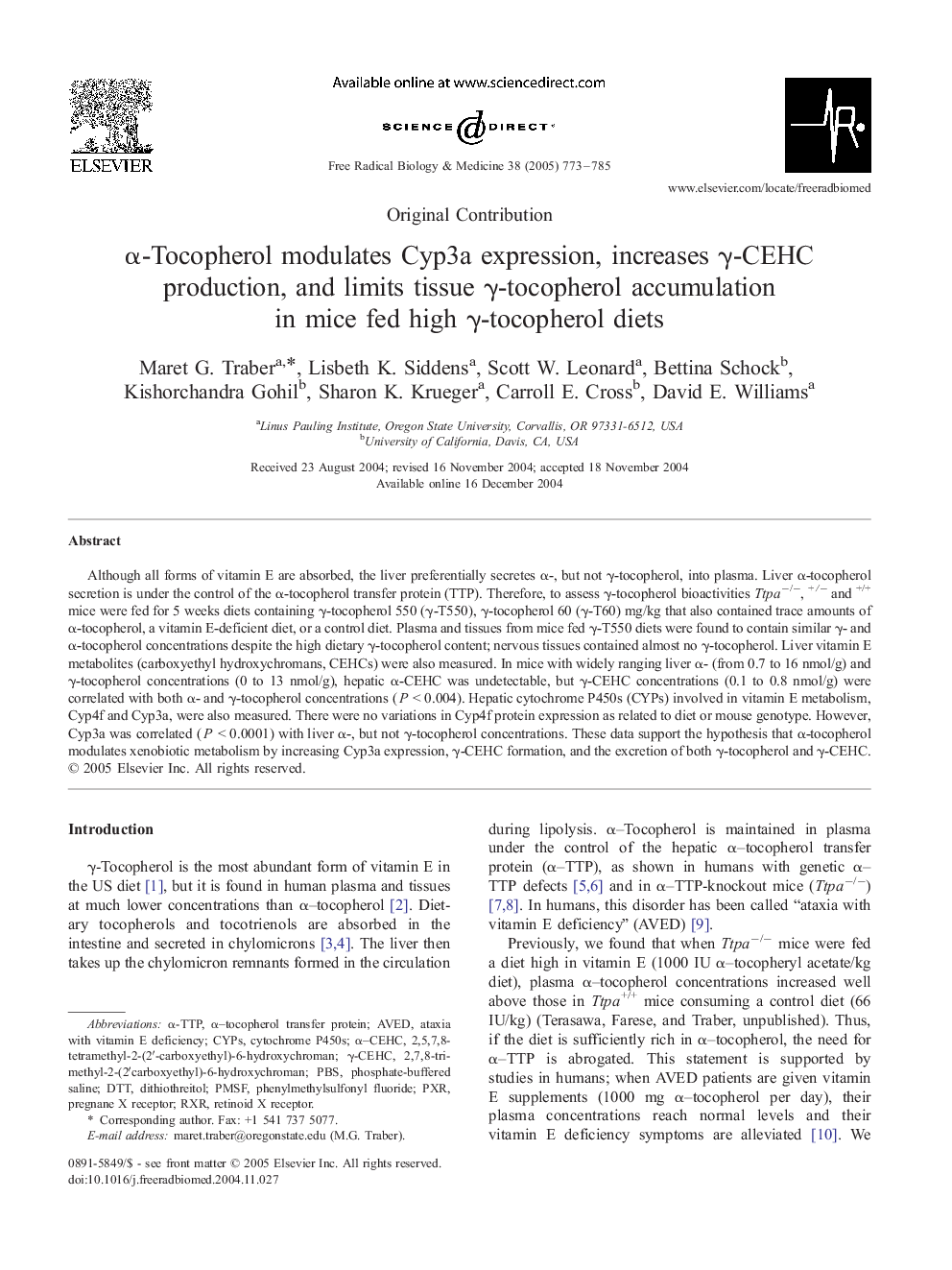| Article ID | Journal | Published Year | Pages | File Type |
|---|---|---|---|---|
| 10738809 | Free Radical Biology and Medicine | 2005 | 13 Pages |
Abstract
Although all forms of vitamin E are absorbed, the liver preferentially secretes α-, but not γ-tocopherol, into plasma. Liver α-tocopherol secretion is under the control of the α-tocopherol transfer protein (TTP). Therefore, to assess γ-tocopherol bioactivities Ttpaâ/â, +/â and +/+ mice were fed for 5 weeks diets containing γ-tocopherol 550 (γ-T550), γ-tocopherol 60 (γ-T60) mg/kg that also contained trace amounts of α-tocopherol, a vitamin E-deficient diet, or a control diet. Plasma and tissues from mice fed γ-T550 diets were found to contain similar γ- and α-tocopherol concentrations despite the high dietary γ-tocopherol content; nervous tissues contained almost no γ-tocopherol. Liver vitamin E metabolites (carboxyethyl hydroxychromans, CEHCs) were also measured. In mice with widely ranging liver α- (from 0.7 to 16 nmol/g) and γ-tocopherol concentrations (0 to 13 nmol/g), hepatic α-CEHC was undetectable, but γ-CEHC concentrations (0.1 to 0.8 nmol/g) were correlated with both α- and γ-tocopherol concentrations (P < 0.004). Hepatic cytochrome P450s (CYPs) involved in vitamin E metabolism, Cyp4f and Cyp3a, were also measured. There were no variations in Cyp4f protein expression as related to diet or mouse genotype. However, Cyp3a was correlated (P < 0.0001) with liver α-, but not γ-tocopherol concentrations. These data support the hypothesis that α-tocopherol modulates xenobiotic metabolism by increasing Cyp3a expression, γ-CEHC formation, and the excretion of both γ-tocopherol and γ-CEHC.
Keywords
Related Topics
Life Sciences
Biochemistry, Genetics and Molecular Biology
Ageing
Authors
Maret G. Traber, Lisbeth K. Siddens, Scott W. Leonard, Bettina Schock, Kishorchandra Gohil, Sharon K. Krueger, Carroll E. Cross, David E. Williams,
